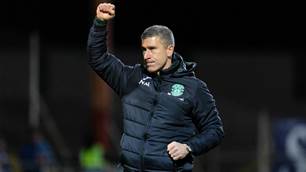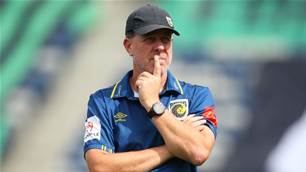Growing the participation rate of football is set to be one of the priorities for Sarah Walsh as she takes on her new position within FFA.
"Participation is the future of our game," said Walsh.
"I am quite focused on making sure that when a young boy and girl turn up to a club that football is their first choice," she said.
In November, an AusPlay Survey showed more than 1.1 million adults and children play football, making it the most participated sport in Australia and within this 1.1 million, 402,000 are female participants, up by nearly 10 percent from a year ago.
However, football isn't the leading team sport for young girls in Australia. Netball comes in number one for girls 9-11 with 23.9 percent of girls surveyed playing the sport outside of school times.
So the growth of participation for girls in the 4-11 age group has become of much interest.
First up for Walsh is the two-day ALDI MiniRoos Forum which will see participation staff from each member federations along with W-League and A-league clubs working together to grow female participation.
"What we are trying to do is ensure we are in the best position to grow girls football, with the focus being towards, over time, getting to 50/50 at grassroots," Head of Women's, Football Development, and Community Football Emma Highwood said.
"We want to connect with girls first. We want to make sure they have a really good experience in our sport and that starts with 4-11 so that is why we are prioritising girls participation from there obviously we have to make sure we support them in the right way," she said.
The forum will look at the pathway for young girls, whether that is signing up to a six-week program or a team, and there will also have an external provided coming in to talk about the challenges girls and women playing football face.
"They will also be going through gender equality training to unpack what is happening with gender stereotypes, unconscious bias, all these things are happening," Walsh said.
"So we are trying to make our stakeholders aware of things they can't see like the cultural barriers women and girls face at club level," she said.
The MiniRoos program is used to introduce the sport for girls and boys aged 4-11 years. The program has mixed and girls only teams, which has allowed young girls signing up to have an option of what team they want to play in.
The program has drawn criticism for having a girls only team option but Walsh says it is about giving options to young girls to make a choice with many young girls signing up to clubs.
 "It's just about providing girls options, they should be able to turn up, play in mixed or play in girls only," Walsh said.
"It's just about providing girls options, they should be able to turn up, play in mixed or play in girls only," Walsh said.
"We just want to provide more options for girls.
"We don't want to have the situation where a girl turns up to a club and is forced to play with the boys if they don't want to," she said.
The former Matilda role is not only growing the game but increasing the involvement of women at all levels and areas of the game, not just on the field, as well as working with A-League and W-League Clubs in their community engagement activities and ensuring that football is a safe sport for kids.
"Clubs have been invited (to the forum) and will discuss how we present our male and female athletes and to make sure they are being represented equally," Walsh said.
"We talk a lot about that we should do it but we often do talk about the why it is important and obviously that is linked back to us trying to grow our female participation numbers," she said.
However, how do FFA make sure they continue growing women's football but also retain the players already involved?
"If kids are having a great experience through their experience with their coach or game leader at a young level, especially in the MiniRoos age group where it is about fun, I don't remember being taught tactics at that age group and we really shouldn't be," she said.
"Now our job is to create an environment to enable all of that," Walsh said.
Related Articles

Champion A-League coach set to join Premier League giants

Emerging Socceroos star set to sign for MLS club













